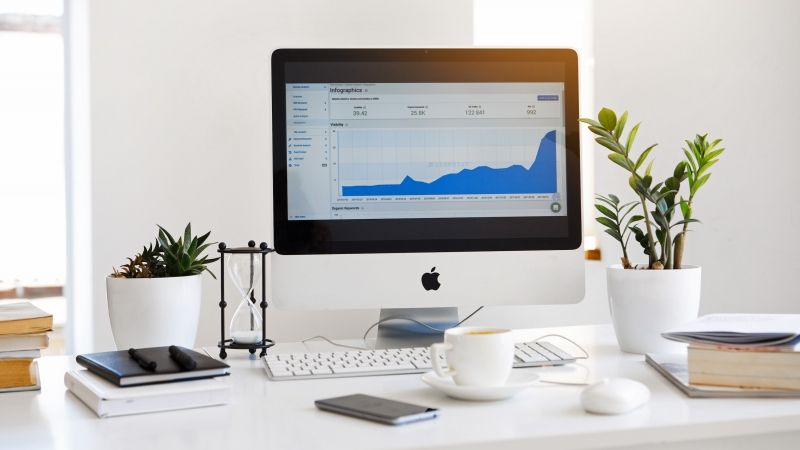Times are still tough for hotels and the meetings and events industry, but things are shifting along the road to recovery. Small in-person meetings are beginning again in some areas. People are getting excited about future travel plans and trips within driving distance. In a PCMA Convene survey from July 2020, 33% of planners said that smaller local and regional events will return before larger-scale events, and nearly 20% think there will be a pent-up demand for in-person meetings.
MICE business will return. In the meantime, take this time to revamp your strategies and be ready for what lies ahead. In this blog post, we cover tips you need to know to boost hotel sales and prepare for resuming – and growing – your MICE business.
Explore 14 tips to help boost hotel sales in 2024 and beyond:
1. Avoid cutting your marketing budget.
Even though it might be tempting to slash your marketing budget to make up for lost revenue, try to avoid doing so. “During a low demand period or economic downturn, smart hoteliers play the long game,” writes Jenn Zajac of Five Star Content, who throughout her career as a digital marketing manager for multiple hotels has seen firsthand the long-term ramifications of these cuts.
Let us help you boost hotel sales today
Zajac suggests pivoting your marketing focus to locals and guests already in your hotel by promoting your hotel's amenities like the spa and restaurant(s). Making sure that your hotel's SEO and social media is in tip-top shape is another way to invest your time and resources to prepare for upcoming business.
“Brands that stay engaged will be the first to benefit during the rebound,” says Stephanie Versin, senior vice president of marketing for Sightline Hospitality, in an article for LODGING. “People will remember those who were still there with them during the tough times.”
2. Refresh your website content.
Take this time to do a website audit and take stock of all the content on your pages. Update your policies, procedures, and offerings and put your plans for safer meetings and social distancing in an easy-to-locate place. Pivot your message toward safer and smaller meetings and socially distant getaways.
Zajac also suggests getting a sitemap of your website so that you can catalog all of the pages and go through them one at a time in an organised fashion. You can use Google Analytics or perform a search of your site by typing “site:yourwebsite.com” into the search bar. As you review each page, make sure the content is updated – and actually useful. Consider how you can change it to make it better than what your competitors are doing, or how you can demonstrate your hotel’s offerings in a more unique way. While timely information related to your COVID-19 precautions is important, Zajac also recommends writing refreshed copy for “normal times” so that you’re ready to post it whenever the time is right.
Your hotel blog is a good place to start posting inspirational content about your hotel and destination to give travellers and planners ideas as they begin to travel and meet again. It’ll be good, too, for your SEO. You’ll show up in search results as people begin to research trips and source venues.
3. Leverage marketing opportunities on the Cvent Supplier Network (CSN).
The Cvent Supplier Network (CSN) is the world’s largest venue sourcing platform – and it’s one of the best ways to get noticed by planners who are sourcing. With custom microsites and interactive ads, it’s even easier to make your venue stand out to planners and build your presence.
Content Marketing Ads can help to alert planners to a major hotel renovation, promote your destination, and capture planners as they’re researching your competition. Suggested Ads put your venue front and center when planners are making their selections on CSN, and creating and sending RFPs – a critical time to be seen. There are also options for boosting your venue to planners who match your need dates or showing your ad on your competitors’ profiles. Search Ads increase your visibility within CSN search results and give you optimal exposure as planners search venues.
4. Update your photography.
Take time to update your multimedia assets with a photoshoot and a video shoot. That way, you can provide a more accurate visual representation of how you’ve changed your setup, room configurations, and onsite offerings to accommodate safer meetings and social distancing.
Post photos from recent events and small meetings you’ve hosted to provide a real-life example. Make sure any photos on your site of things like crowded restaurants are replaced with your outdoor, green spaces or amenities like the pool or spa.
Create promotional videos that showcase your property and destination and highlight how you’re ready to host safer meetings. It’s also a great way to demonstrate your offerings to planners that they can view from the safety of their own homes.
5. Be ready to constantly adapt and adjust.
Typically, the marketing calendar is created yearly and set up with quarterly goals. Next year is going to be a different story. Creating a month-to-month marketing plan will be the easiest way to remain nimble and assure that you can pivot quickly, depending on what demand and the environment look like.
It's not just marketing that will need to be fluid. Protocols and offerings for in-person meetings will also need adjusting depending on the number of attendees, size of the room, and specific requirements from the planner.
As part of its Connect with Confidence initiative, Marriott has published new digital content on its website to help planners understand what a meeting at Marriott will now look like. There's a guide for meeting planners that includes Marriott’s new protocols and procedures, as well as examples of recent events to demonstrate Marriott’s capabilities and show planners what their event can look like. Other highlights from the meeting guide include socially distant room diagrams, mobile apps for attendees who want a contactless experience, options for safe food and beverage, and information for planners about hosting a hybrid event. This kind of material will aid sales teams when having conversations with planners about your property’s preparedness and ability to provide safer meetings.
6. Focus on swift responses to planners.
While in-person events look different than in the past, planners are still sourcing, and speed and attention to detail still matter. According to the 2019 Cvent Planner Sourcing Report, nearly half (44%) of planners cite communication problems as the reason for choosing to not submit an RFP to a venue. And 32% of those surveyed want hotels to improve attention to detail in their RFP responses, while 20% want faster responses. Planners today still expect speed and thoroughness when engaging with venues. The absence of these can limit a venue’s opportunity to be considered for an event.
Planners don’t have time to track down additional information. They’re balancing many priorities and expectations from both attendees and executives. While you may be working with a reduced headcount, it’s understandable that your response times might be slightly behind what they are normally. Focus on replying as quickly as you can and offer as much detail upfront as possible to reduce the back and forth between you and the planner.
7. Make it easy to book directly on your website.
Research from a meetingsbooker.com report showed that venues spend an average of 47 minutes handling an offline meeting booking request. With online solutions to enable direct booking of small meetings on your website, you can streamline your sales process and free up your team to focus on other more detailed and complex requests.
8. Target local and drive market events.
Take the time now to develop and deepen your relationships with local contacts so you’ll be more likely to win their business as drive-to meetings and events are put on the books. With creative marketing solutions that showcase the unique experience your hotel provides, you can maximise your drive-to event revenue in the long term by combining it with leisure and transient opportunities, like providing short weekend getaways as add-ons after a drive-to event.
In addition to working with local businesses, your destination’s CVB is a valuable partner during these times. As hotels have been short-staffed, CVBs have jumped in to help hotel partners find qualified RFPs, and in some cases have even responded to RFPs on their behalf. Cvent has also further simplified this process by providing DMOs the ability to view Showcase RFPs in their market and forward them to hotel partners. In other words, DMOs can now proactively find the best RFPs from the showcase to pass to hotels.
Above and beyond providing leads, CVBs are an extension of a hotel’s marketing and sales team. And right now, most hotels need the help. CVBs can follow up with hotels that haven’t responded and spread messages about lead updates quickly. And even after the hotel has made its pitch to the planner, CVBs can continue to help facilitate the partnership.
9. Change how you market and sell your space.
Meetings and events now come with new challenges, and social distancing is a critical part of that. Delivering and maintaining high standards to clients is dependent on the ability to adapt and thrive in changed circumstances. As industries restart, suppliers need a way to organise their event space according to social distancing regulations and collaborate effectively with planners in a reopening. Room diagramming is a first step. Event space specifications, and the ability to diagram the event, are even more critical during the pre-sale stage.
It helps demonstrate that the supplier has a truly vested interest in partnering with the client. Not every RFP converts to a sale, of course, so even if the supplier isn’t successful, room diagrams give planners a reason to remember them. The aim is to be first-in-mind when the planner next sources by providing a tailored pre-sale experience and a visual representation that the supplier is ready to host safe events and accommodate their needs.
Social distancing and the available room layouts at your venue are important for planners to know as they prepare for in-person events. And attendees will want to know they’ll be able to be at a safe distance from other attendees before they commit to registering. By using event diagramming software, hotels can upload floorplans with accurate spacing and measurements so planners know the exact dimensions they’re working with.
With tools like Cvent Event Diagramming, venues can go a step further and create custom room layouts that match health and safety guidelines to demonstrate to planners their ability to host safer meetings. The photo-realistic site tours also offer 3D, remote tours to planners so they can get a virtual walkthrough of the space and absorb every detail.
10. Repackage rather than discount.
During slow periods or recessions, cutting prices is tempting. But rather than slashing prices, Zajac advises repackaging. “Upsells and packages are among the most effective strategies to increase hotel revenue and occupancy,” she writes on her website. “They can prove enticing to consumers during critical need periods — and often cost very little to execute.”
Think about what your hotel can offer to make a package more appealing to guests or planners. How can you set yourself apart from the competition? Rather than slashing rates, which can be difficult to recover from financially, instead create unique and appealing packages, add-ons, and upsells. Consider things like daily happy hours either outside or in a socially distant setup, complimentary massages, wellness packages that include yoga or fitness classes, or private dining options.
11. Consider alternate revenue streams.
Because of the changes in the way we meet and travel, it makes sense for hotels to transform and expand their focus, too. What else can your hotel offer besides meeting spaces and guest rooms that will fit the needs of today’s travellers and attendees?
Some hotels have set up socially distant coworking spaces or reworked guest rooms into home offices where guests can rent the room for the day during business hours. This is a great solution for locals who are weary of working from home but cannot yet return to the office. And it’s a way to gain alternate revenue for your property.
Other hotels are offering their lobby or common areas as pop-up space for local vendors or are offering special deals for hotel guests. Partnering with local businesses to create exclusive packages for guests is a mutually beneficial way to boost hotel sales and the local economy.
The Hotel Revival Baltimore responded to its city’s needs by offering free pop-up space for small local food vendors to use for curbside pickup and delivery during the nonessential business shutdown. The hotel has also devoted resources to feeding its community. With the help of local partners, it has delivered produce to those in need and distributed hundreds of pre-packed lunches.
12. Invest in the latest technology.
Contactless experiences are top of mind for travellers and event attendees at hotels. Research from Criton found that 80% of hotel guests would use a hotel app if it allowed them to do contactless things like remote check-in. The same study found that only 8% of guests feel comfortable using a public kiosk for checking in. Cleanliness is also top of mind, with 75% of respondents saying they want the hotel to have COVID-19-specific cleaning standards that are clearly defined.
These needs can be met with technology solutions. Brands like Marriott and Wyndham have implemented mobile check-in or mobile room keys into their apps. The InterContinental Houston – Medical Center recently installed an air-filtration system designed to kill COVID-19, anthrax spores, and other contaminants. It’s the first hotel to do so. CIRQ+ has developed a new cleaning robot for hotel rooms that disinfects autonomously without the need for manual labor. Google and Volara have partnered to create contactless experiences in hotel guest rooms with an in-room voice assistant. Guests can control everything from the lights to the TV to alarms, to contacting the front desk — all through voice commands. Viceroy Hotels & Resorts, Gansevoort Meatpacking in New York, and The Gale South Beach plan to install this solution at their properties.
The hotel digital transformation era is fully upon us. It's paramount that you stay ahead of the curve and ahead of the competition.
13. Pivot to virtual and hybrid events.
As we move toward a new era of meetings and events, planners are increasingly adding a permanent virtual event component to their in-person meetings. In fact, in a recent Cvent survey, 76% of planners said they would plan a hybrid event, and 62% said they use more technology in their meetings and events programmes due to the COVID-19 pandemic. For venues, hybrid events are a smart way to prepare for an unsettled future, market your property, discover new efficiencies, and scale to meet the evolving needs of attendees.
One of the ways you can increase MICE or transient leads and get the word out is by updating your website, inbound marketing, and Cvent Supplier Network profile. Make your hybrid capability a key feature and provide all the information planners might want. Include important updates such as new cancellation and turndown responses, a capacity calculator, hotel safety protocols, and outdoor meeting space enhancements.
Suppliers would benefit from capturing the versatility of their property through videos, highlighting exactly what a safe event experience looks like – from arrival, to contactless check-in, to the event itself. Create a video detailing a hybrid event you recently hosted, showing how your spaces are adaptable and your A/V capabilities are reliable, and show how audiences both online and offline responded with social distancing in place.
Prepare your sales team to have tech capability discussions and give them the best possible opportunity to win MICE business. You also need to be able to provide some introductory advice as a virtual producer and hospitality expert to help build planner confidence.
But why wait for the RFP to come to you? Don’t be afraid to propose the idea of hybrid events to planners. In the case of The Grand Amsterdam, they invite planners regularly to have discussions and brainstorm ideas. It’s a fantastic way to showcase a supplier’s capability to scale a small, local meeting into a larger one through the use of virtual technology.
14. Adapt Duty of Care policies.
According to another recent Cvent survey, 58% of respondents said that insufficient health and safety protocols were preventing planners from rescheduling postponed events. Duty of care has always been important for hoteliers, but with heightened concerns around health and safety, it’s even more critical.
In April 2020, Pegasus published an article outlining some considerations for hotels as they reshape their duty of care policies. Increasing frequency and standards of cleanliness go without saying. Some other suggestions from the article are temperature checks of employees and guests, having protocols if someone is found to have a high temperature or is a suspected COVID-19 case, and creating contactless or low-touch experiences with remote check-in and removing some in-room amenities like robes and slippers.
Make sure your sales teams are equipped to have these conversations with planners throughout the sales process, so they can assure them that your property is ready and able to handle any situation that might arise.
Boost hotel sales by following these tips!
Up next, check out our list of tips for digital marketing so you can maximise your visibility and grow your business even further.
Check out our digital marketing ebook for more tips to grow your business





